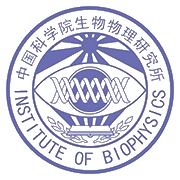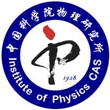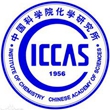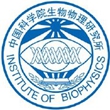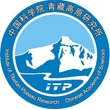Sessions 1:Mathematics and Physics
Jianwei Pan
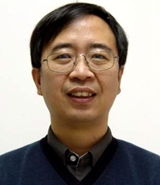
Character introduction
Jian-Wei Pan, born on 11 March 1970, received his Bachelor (1992) and Master (1995) in Physics from the University of Science and Technology of China, Hefei, and his PhD (1999) from the University of Vienna. After his PhD, Pan worked in Anton Zeilinger’s group in Vienna as a senior research associate until 2003 when he joined the University of Heidelberg to build up his own group with Emmy Noether Research Award, Sofja Kovalevskaja Award, and Marie Curie Excellence Research Award. Since 2009 Pan is an honorary professor of the University of Heidelberg. He is currently a Professor of Physics of the University of Science and Technology of China, an Academician of Chinese Academy of Sciences (CAS), and a Fellow of the World Academy of Sciences (TWAS). He serves as the Director of the CAS Centre for Excellence and Innovation in Quantum Information and Quantum Physics, and the Chief Scientist for the Quantum Science Satellite Project, and the Beijing-to-Shanghai 2000-km Quantum Communication Backbone Project. Jian-Wei Pan has authored more than 270 articles which have attracted more than 32000 citations. Pan has won Fresnel Prize from European Physical Society, Quantum Communications Award, First Prize of National Prize for Natural Sciences of China, Future Prize in Physical Science, Willis E. Lamb Award for Laser Science and Quantum Optics, Newcomb Cleveland Prize from American Association for the Advancement of Science, R. W. Wood Prize from Optical Society of America and was selected by Nature as “people of the year” in 2017 who “took quantum communication to space and back”.
Topic: Quantum Leap: From Tests of Quantum Foundations to New Quantum Technologies to Space-scale Tests of Quantum Foundations
Abstract Quantum information science and technology are emerging and fascinating technologies formed by combining coherent manipulating of individual quantum systems and information technology, which enables secure quantum cryptography (quantum communication), super-fast quantum computing (quantum computation), and improving measurement precision (quantum metrology) etc., to beat classical limits.
For fundamental aspect, one is led to the conception of quantum entanglement. The appeared ‘spooky action at a distance’ phenomena referred by Einstein, is often explained by seemingly reasonable assumptions of "local realism”. The inequalities proposed by John Bell and others provide immediate tests for correctness of quantum mechanics. Many efforts are addressing loophole-free tests of Bell inequalities, which tries to close various loopholes, in which some of loopholes are still needed to be addressed including freedom of choice loophole, the collapse locality loophole. Well, the final test is on-going, many developed ground-breaking technologies for coherent manipulation of quantum systems offers elegant and feasible solutions for satisfying increasing needs of computational power and information security.
Based on state-of-the-art fiber technology and rich fiber resources, we have managed to achieve prevailing quantum communication with realistic devices in real-life situation. This constitutes demonstrations by developing decoy state scheme over 100km firer, extending its employment in the metropolitan area network, as well as maintaining Measurement Device Independent QKD (MDI-QKD) over 400km. At the meantime, we are also developing practically useful quantum repeaters that combine entanglement swapping, entanglement purification, efficient and long-lived quantum memory for the ultra-long distance quantum communication. Another complementing route is to attain global quantum communication based on satellite. We have spent the past decade in performing systematic ground tests for satellite-based quantum communications. Our efforts finally ensure a successful launch of the Micius satellite. Three major scientific missions have been finished, which includes achieving QKD between satellite and ground station at thousand kilometer scale, achieving satellite-based entanglement distribution between two ground stations separated by a distance of 1200 km, achieving quantum teleportation from ground to satellite over 1400 km. Very recently, using Micius satellite as a trustful relay, the intercontinental QKD between Beijing and Vienna over a distance of 7600 km has also been realized.
Future Prospects include building a global quantum communication infrastructure with satellite and fiber networks, enormous spatial resolution and global precise timing information sharing networks with applications for the global quantum communication network, ultra-precise optical clocks in outer space to detect gravitational wave signal with lower frequency, and Bell-test experiment with human-observer at a distance on the order of one light-second.
For fundamental aspect, one is led to the conception of quantum entanglement. The appeared ‘spooky action at a distance’ phenomena referred by Einstein, is often explained by seemingly reasonable assumptions of "local realism”. The inequalities proposed by John Bell and others provide immediate tests for correctness of quantum mechanics. Many efforts are addressing loophole-free tests of Bell inequalities, which tries to close various loopholes, in which some of loopholes are still needed to be addressed including freedom of choice loophole, the collapse locality loophole. Well, the final test is on-going, many developed ground-breaking technologies for coherent manipulation of quantum systems offers elegant and feasible solutions for satisfying increasing needs of computational power and information security.
Based on state-of-the-art fiber technology and rich fiber resources, we have managed to achieve prevailing quantum communication with realistic devices in real-life situation. This constitutes demonstrations by developing decoy state scheme over 100km firer, extending its employment in the metropolitan area network, as well as maintaining Measurement Device Independent QKD (MDI-QKD) over 400km. At the meantime, we are also developing practically useful quantum repeaters that combine entanglement swapping, entanglement purification, efficient and long-lived quantum memory for the ultra-long distance quantum communication. Another complementing route is to attain global quantum communication based on satellite. We have spent the past decade in performing systematic ground tests for satellite-based quantum communications. Our efforts finally ensure a successful launch of the Micius satellite. Three major scientific missions have been finished, which includes achieving QKD between satellite and ground station at thousand kilometer scale, achieving satellite-based entanglement distribution between two ground stations separated by a distance of 1200 km, achieving quantum teleportation from ground to satellite over 1400 km. Very recently, using Micius satellite as a trustful relay, the intercontinental QKD between Beijing and Vienna over a distance of 7600 km has also been realized.
Future Prospects include building a global quantum communication infrastructure with satellite and fiber networks, enormous spatial resolution and global precise timing information sharing networks with applications for the global quantum communication network, ultra-precise optical clocks in outer space to detect gravitational wave signal with lower frequency, and Bell-test experiment with human-observer at a distance on the order of one light-second.
Previous Hongjun Gao
Next Alain Bécoulet

